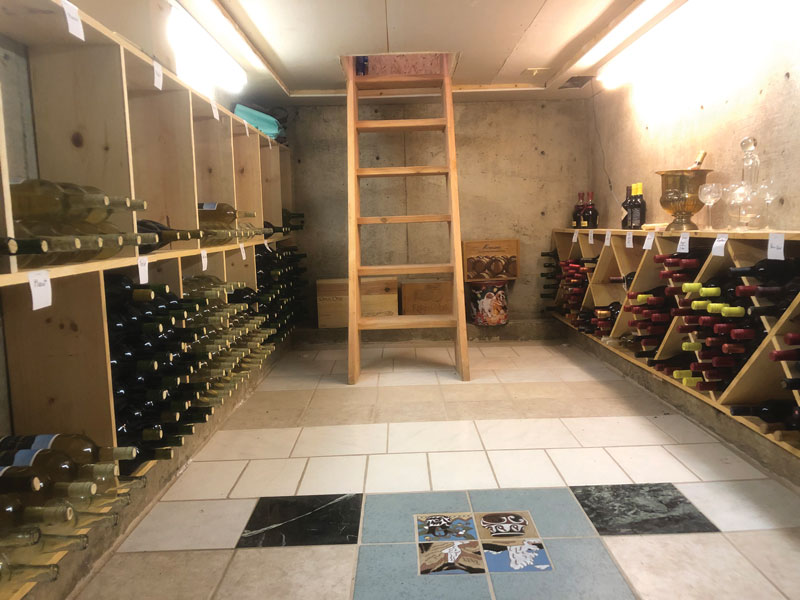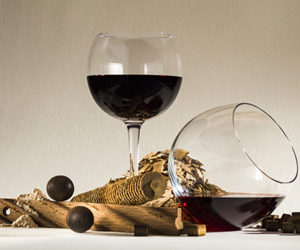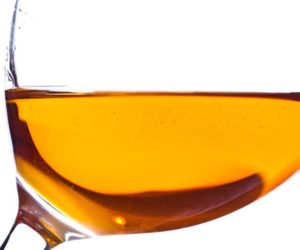Most winemakers who are reading this are already in the know for much of this material I’ll be laying out today because most were vinophiles first. The goal of this column is to lay out the details that will give your wines the best chance to age and develop in a positive manner, with the hopes of rewarding you for years to come. This can be commercially purchased wine or wine that you made, bottled, and are now ready to store away. While this article may be designed for those that were not vinophiles before, my hope is that even seasoned veterans may get some pointers too.
Wine Cellar Location
Wine storage is commonly associated with cellars and caves. This is because these underground options often possess the optimum conditions for storing and aging wine: Constant temperatures, plenty of humidity, darkness, and stillness. While digging an underground cave might be ideal, I realize it’s not exactly in everyone’s budget nor reality. The idea is to focus in on those four factors and find space that comes closest to matching the cave experience. Finding a humid spot in your house that minimizes temperature fluctuation, is mostly devoid of light, and hopefully free of lots of vibrations is ideal.
Basements are often the first location to come to mind and typically best match those parameters, many being damp, dark, with stable temperatures, and on firm ground. Interior closets or another dedicated storage space can also be utilized, trying to stick with those cave “ideals” in mind.
Wine Racks
If your wine bottles have cork, especially natural cork, then storing the bottles on their sides is basically required. While you may not need to store screw-top bottles on their side, let’s be honest . . . they do look cooler that way. Also, it’s the traditional way to store wine, has space-saving implications (occupying minimal floor space), and different bottles are easily accessed via a racking system.
Wine racks are a great investment and don’t need to cost an arm and a leg if you are a handy person. There are many designs found at winemakermag.com and elsewhere around the internet for the DIYers. For short-term storage, wine boxes (wooden crates are great) placed on their side can work, but you don’t want to stack them vertically, so you will lose accessibility when more wine is added. Once you know the location you would like to store your bottled wines, the first thing you should research is the style of wine racks you want to use.

Ambient Temperature
Having a temperature-controlled space is ideal. Most literature states that the best temperature to store your aging wine is between 50–55 °F (10–13 °C). There are changes that we are looking to promote, such as tannin profile, so storing colder will slow this process. Storing warmer than this will accelerate the process. Storing warmer or colder than this “ideal” temperature range is not inherently a bad thing, we just need to understand the concept and adjust our aging plans to match.
For those that live in a cooler climate, basements are great at approaching this and holding it close to that “ideal,” typically seeing minimal temperature fluctuations (don’t store near a furnace). If your plans are more modest, an older fridge modified with an external thermostat controller may work well. For more on other options winemakers will employ, check out the section titled “Utilities and Temperature Control” in Bob Peak’s feature story that is found on page 34.
Wine Cellar Humidity
Having humidity control is a bit more of a luxury and less a necessity compared to having control over the temperature in your storage space. But there are some control systems that will offer both temperature and humidity control of the enclosed space. The humidity levels that are recommended generally fall in the 50–65% range. One of the biggest problems with going higher would have to do with mildew and microbial issues in the space while going lower could eventually dry out corks made from wood. Many basements that aren’t “wet basements” commonly fall close to this range. While a hygrometer was typically the tool of choice to measure humidity levels, many of the newer “smart” thermostats will read this for you, like a Google Nest device.
Light, Stillness, and Smell
Outside of oxygen, light is one of the biggest enemies of aging wine. UV light in particular is harmful to wine and one reason most wines that are meant to age (reds in particular) come in dark brown or green bottles, because they offer the best protection from light besides opaque bottles.
As mentioned earlier, try to avoid storing wines in a spot that could see a lot of traffic or vibration. We want to let the wine settle.
Finally, try to avoid dank and possibly moldy places. We want to discourage things growing on the bottle that could eventually find their way into the wine. Smell is a key indicator here since it will indicate that the environment is not sanitary and it’s best to avoid storing wine here.
Finally, as your cellar grows, a tracking system can be quite handy. Simple signs or a notebook can serve you well. There is software available, but a basic spreadsheet should be more than enough for tech-minded folks.







